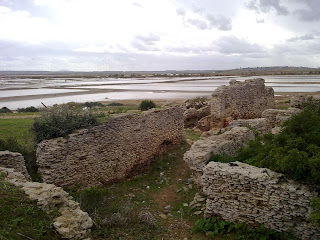Ar:
En:
Tahadrat
archaeological sites on the right bank of the “valley of tahadart(
near Salinas)” in the Attlantic Ocean about 15 km north of Asilah
city. The archaeological remains that have been detected from the
effects of residential community and pottery factory and soaked
salted fish is dating back to the Punic Moorish (sixth century- the
first century B.C). In addition to ceramic pot and Almvurat used to
store and transport food, especially those have been found in some of
Greece cities such as Olombia and Carinthia. As revealed the remain
of archaeological excavations back to the Romania, and basing are
part of a factory for salting fish dating back runs to the end of the
first century B.C and third century A.C.







































